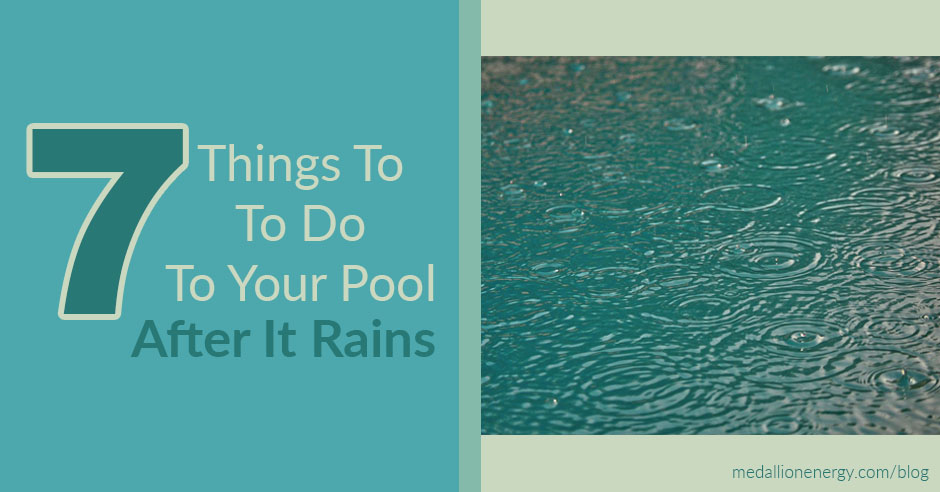Have you ever wondered if there’s something you should do to your pool after it rains? As a pool owner, it’s a definitely a question worth asking. Because after heavy rain, pools undergo a few changes on both a chemical and physical level.
Rainwater affects pH and Alkalinity levels, while excess rainfall adds extra water in the pool that you don’t need. Not to mention all the contaminants that rainstorms sweep into your water.
That said, the amount of rain that gets into your pool is important to consider. Light rainfall and showers won’t have a big impact on your water when compared to a 3+ hour tropical storm. Nonetheless, they’re both going to affect your pool chemistry.
To avoid a pool chemistry nightmare, follow the next few tips in this post. We show you 7 things to do to your swimming pool after it rains to keep your water crystal clear and ready for swimmers.
7 Things To Do To Your Pool After It Rains
Check your water level
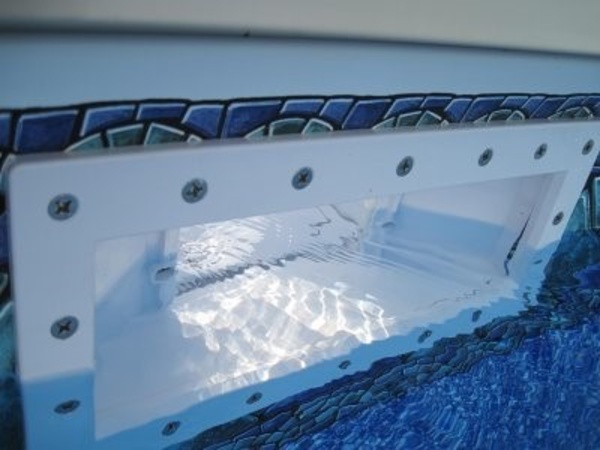


If you’re wondering what’s the first thing you should do after it rains, check your pool’s water level. Especially if there was a major storm or hurricane.
Odds are your water level is WAY past where it should be: the middle of your skimmer opening. And when that happens, everything from filtration to water chemistry gets affected.
Thankfully, fixing this small problem is easy:
If your water is past mid skimmer level, then gradually drain your pool to bring it down. To do that you need your pool pump.
Here’s how to drain water from a pool after it rains:
- Set your pump to “Waste” or “Backwash”
- Hook up your backwash hose
- Turn on the pool pump
- Keep an eye on your water level as your pump empties water.
- Stop your pump once your water is at mid-skimmer level.
If you want to get a jump start on cleaning, make a slight change to the above process: Instead of just running your pump to backwash, hook up your pool vacuum to your pool skimmer. From there, get two things done at once while you vacuum the pool floor and decrease your water level.
Turn on the filter system
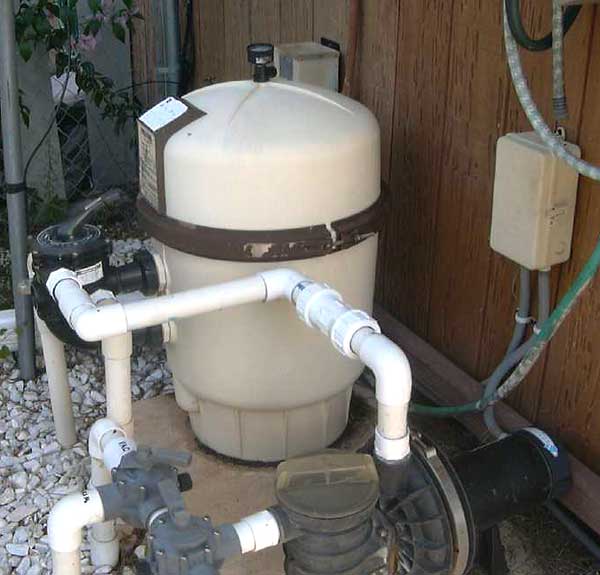


Once your water level is restored, it’s time to get your water circulating.
IMPORTANT: Before turning on your pump again, empty out your pump and pool skimmer baskets. Then set your pump to “FILTER”
Turn on your pump and leave it running as you move on to the next step. Your main drain will handle some of the cleaning while you keep busy.
You might also want to:
- Turn on your pool heater to start warming up your water
- Get your pool water testing kit and chemicals ready
Related: How Long To Run Your Pool Pump & The Best Time To Do It
Shock the pool
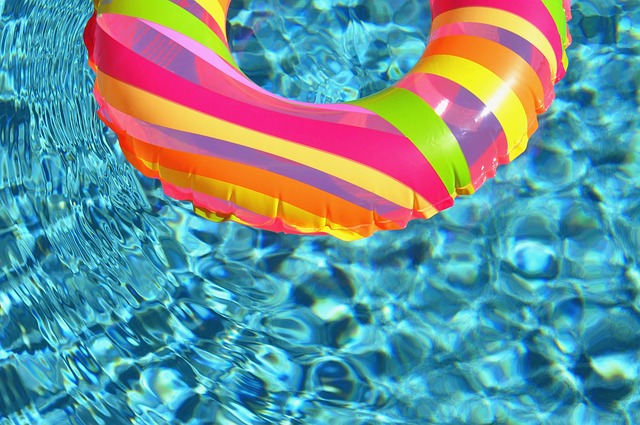


It’s not time to fix your pool chemistry just yet – that said, there’s nothing wrong with giving your water a little boost. After heavy rainfall, your pool’s chlorine levels will be much lower from fighting off contaminants.
Shocking your pool replenishes the chlorine lost from the rain. And while one shock treatment won’t be enough to balance your water, it’ll work in the background as you continue cleaning your pool.
That way, by the time you do start adjusting chemicals, your chlorine levels will be closer to the normal range.
So shock your pool and keep the pump running.
And if you’re wondering if you can shock a pool IN the rain, the answer is yes. Just remember that rainwater adds more contaminants, so it won’t be as effective as shocking during dry weather.
Related: 7 Causes of Swimming Pool Chlorine Loss & The Best Ways To Prevent It
Skim surface debris
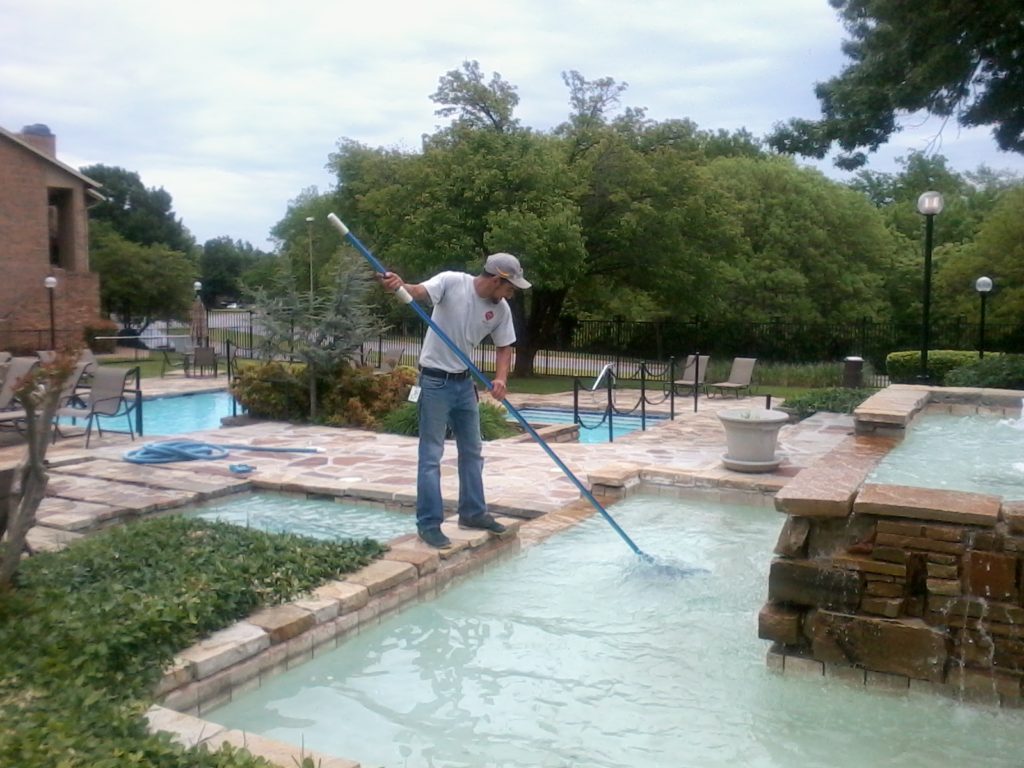


If you see ANYTHING floating on the surface of your water, skim it out now.
If you wait, it’ll end up sinking down to the pool floor later. And if you don’t vacuum, then it’ll stay there, soaking up your chlorine and ruining that crystal clear water you love.
Most pool surface debris is limited to leaves, twigs, and bugs. But the point here is to clear out everything on the surface.
So grab your skimmer and fish out everything within reach.
To speed up skimming in the future: add an automatic skimmer to your pool. These handy pool accessories attach to your return jets and peak out just above the surface of your water, catching any surface debris that comes around.
Brush and vacuum the pool floor
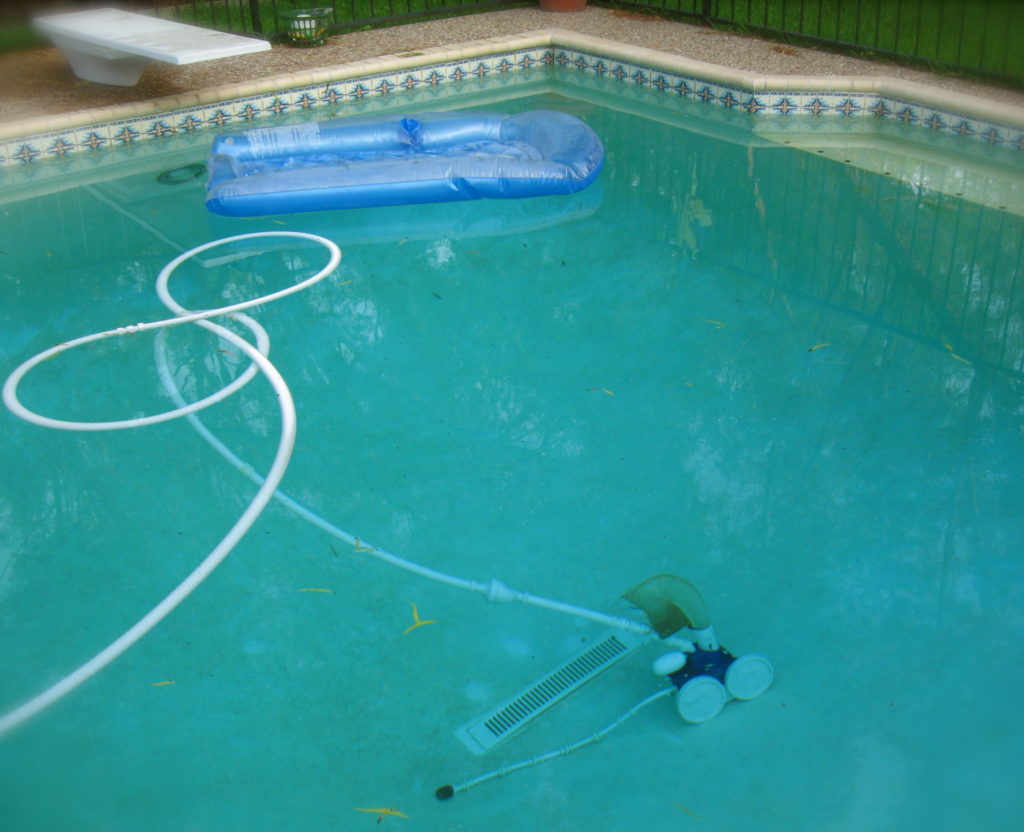


With the surface of your water looking smooth, it’s time to “dive down” to the pool floor.
But before that, start by scrubbing the walls and stairs. Although they might look clean, there’s a good chance that contaminants are lurking – waiting to grow and turn your pool into a green or cloudy white mess.
Once you’re done scrubbing, hook up your vacuum to the skimmer and clean the pool floor. Vacuum across the full length of the pool for the best results.
If you have an automatic pool cleaner, drop it in and move on to the next step.
If you don’t have a vacuum, use your brush to push floor debris towards your main drain. Your main drain will suck it up and send it straight to the filter.
Test your water
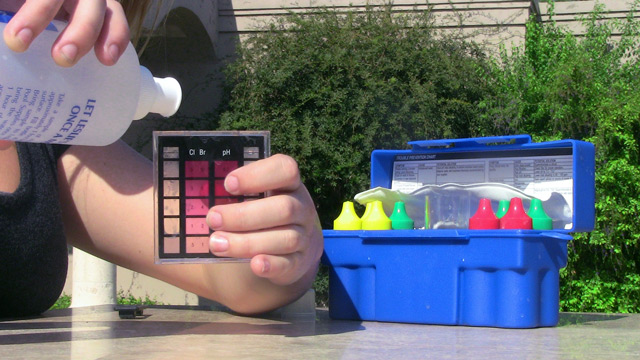


Of all the things you do to your pool after it rains, this might be the most important. Why? Because it’s the key to KEEPING your water clean going forward. And it’s the only way to prevent your water from turning green or cloudy white when it rains.
Here’s a quick summary of how rain affects pool chemistry:
- Acid rain causes your water’s pH to decrease
- Rainwater also decreases Total Alkalinity
- Since Alkalinity is what protects your water’s pH, expect larger changes in Total Alkalinity than with pH
- Heavy rain adds contaminants to your water, which decrease chlorine levels
- Chlorine works less effectively when pH is too high or low
To counteract the effects of rainwater, start by testing your water:
- Check pH
- Proper pH ranges between 7.4 to 7.6
- Check Total Alkalinity
- Good TA ranges from 80-120 ppm
- Check Calcium Hardness
- Healthy CH levels range from 100-300 ppm (the lower the better)
- Check sanitizer/chlorine levels
- At least 3ppm (but 1-2 ppm higher is OK)
Is your swimming pool green after rain?
Check out this post: Fix a Green Pool in 5 Easy Steps
Adjust chemicals to rebalance your water
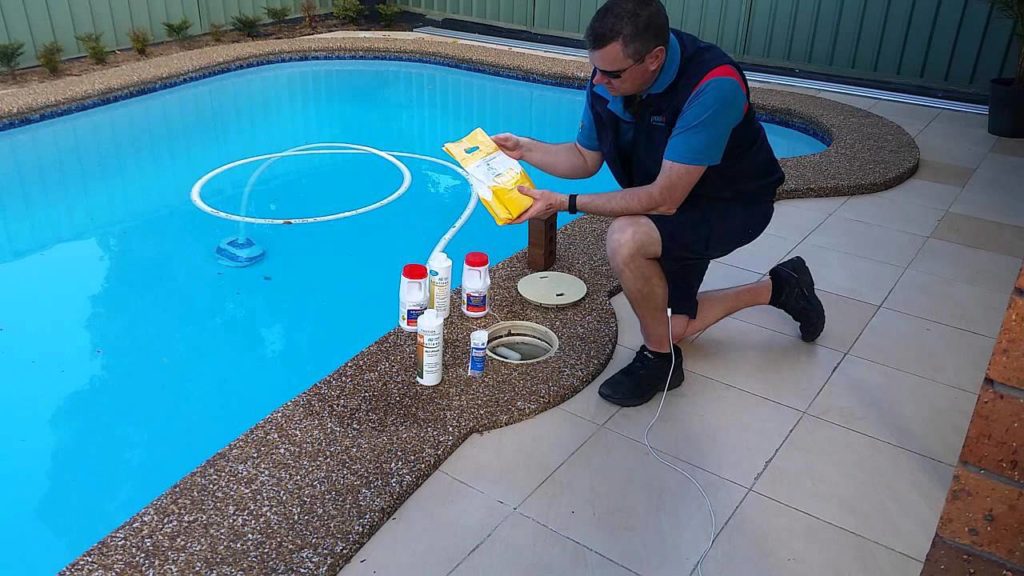


After testing your water, you should know which chemicals need the most adjustment.
Most of the time, it makes the most sense to start with TA, as it’s what stabilizes your pH. From there, pH, CA, and then Sanitizer.
How to adjust pool chemicals:
- Adjusting pH
- To increase your pool’s pH: Use soda ash/sodium carbonate
- To decrease your pool’s pH: Use sodium bisulfate or muriatic acid
- Adjusting Total Alkalinity
- To increase your pool’s TA: Use baking soda
- To decrease your pool’s TA: Use dry acid or muriatic acid
- Adjusting Calcium Hardness
- To increase your pool’s CH: Add calcium chloride
- To decrease CH: Dilute your water
Learn more about balancing your water in this post.
Related: Balance Your Swimming Pool in 7 Easy Steps
Here are a few other posts you might want to check out:
- 9 Ways To Prepare Your Pool For a Hurricane or Storm
- How To Protect Your Pool Heater From Hurricanes
- Pool Stain Removal 101

